Erwin Wurm unveils his latest cast of characters at Lehmann Maupin in New York
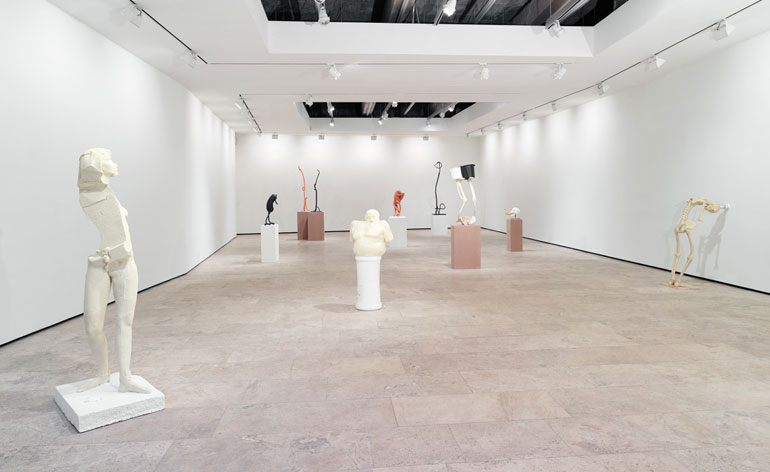
We've come to expect nothing short of the bewildering when it comes to the work of sculptor Erwin Wurm. The Austrian artist is presenting three new series of works in 'Synthesa', his freshly opened second showing at New York's Lehmann Maupin gallery, in which he continues to explore and experiment with abstracting the human form. The big difference here is that Wurm has made all the pieces himself.
It's a disarming admission that comes straight from the artist. 'Recently I have ended up like many other artists, not making the stuff myself anymore, but with the studio [doing the pieces],' he explains. 'So I had the feeling that I was disconnected from my work and with these pieces, I have started to be reconnected again.'
Wurm's revitalised approach to his artistic pratice came with its own set of challenges. 'It was a struggle at first because I had to make every little decision. Like the [seams] here, do I leave them or do I cut them away?' he says. 'They are serious questions and problems. And I had to decide them. For me, that was important because I had to get close.'
'Synthesa' is formed by three groups of works. On entering the gallery, visitors are greeted by several deconstructed figures, whose distorted forms are deliberately incomplete or interjected with plastic buckets. 'We scanned people from my studio and then printed them out in polyurethane. This is a very fragile material, so we found a way to cast them in acrylic,' explains Wurm of the ghostly, discoloured statues, exemplary of his notorious obsession with the human body. 'In my very old work from the 1980s, I used a lot of vessels because they keep things inside them, much like the body. So this is a reference to my early pieces.'
A second group of figurative works touches on another cornerstone of Wurm's past: frankfurters. 'The sausage is such a European icon. In a way, sausages are related to biological beings, like animals and people, because [they are encased in] intestines,' offers Wurm. Slender and humorous, the abstract sculptures are made from cast-bronze components, which were then painted and assembled into life-like formations. While some openly mimic the human gait, others soar into space slightly off-kilter.
The third, similarly cryptic grouping is a dimensional extension of the artist's famous 'One Minute Sculptures' series - which he paid homage to with his deep-fried gherkins recipe in our Artist's Palate Series (W* 138) - where the public posed in sculptural formations for short periods of time. Entitled 'One Minute Forever', Wurm's new take on the theme sees various parts of the skeleton composed with inanimate objects to curious effect.
'I had this interesting experience when I visited a famous church in Rome, with a cloister close to it. It's covered with Baroque ornaments made from human bones; of the hands, joints and shoulders, on the ceiling and on the walls. Very strange and gross,' he explains. 'But then, there were two plaques saying, "We are what you will be and we were what you are." And these were a shock. I wanted to take this [sentiment] and transform it.'
By putting his own hand back into his works, Wurm's flair for bringing together the familiar and the strange is taken to a whole new level. His take on psychology, physiology and humanity might not always be pretty, but they are striking and completely open to interpretation nonetheless.
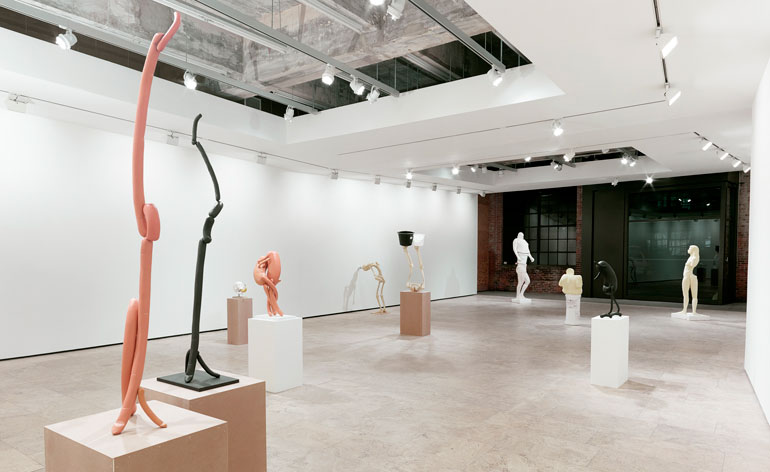
Wurm continues to explore and experiment with abstracting the human form in three series of works: 'Synthesa', 'Abstract Sculptures' and 'One Minute Forever'
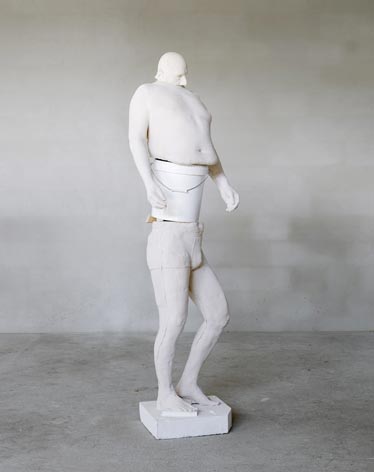
On entering the gallery, visitors are greeted by several deconstructed figures, whose distorted forms are deliberately incomplete or interjected with plastic buckets. Picture is 'White Bucket (Synthesa)', 2013
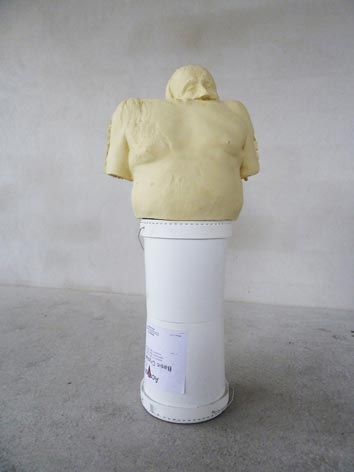
Wurm created scans of people in his studio, then printed them out in polyurethane and cast them in acrylic to create his ghostly, discoloured statues. Pictured is 'Double White Bucket (Synthesa)', 2013
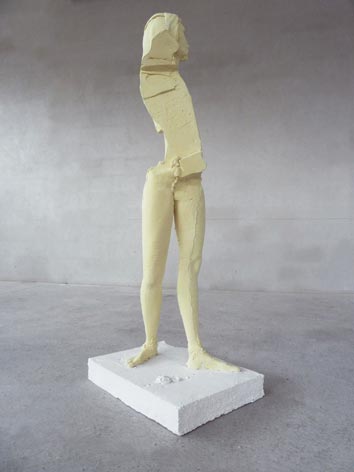
'She He She (Synthesa)', 2013, like the other pieces in the 'Synthesa' series, references Wurm's earlier works from the 1980s

'Arch (Abstract Sculptures)', 2013, belongs to a second group of figurative works that touches on another cornerstone of Wurm's past: frankfurters
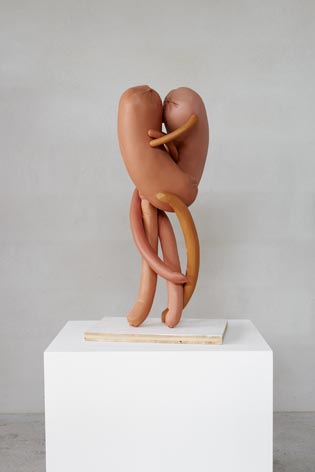
Slender and humorous, like in 'Kiss (Abstract Sculptures)', 2013, the sculptures are made from cast-bronze components, which were then painted and assembled into life-like formations
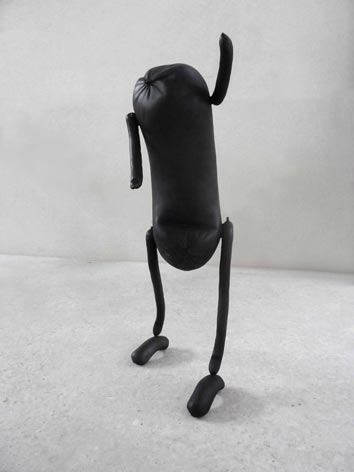
'The sausage is such a European icon,' says Wurm of his long-time muse. Pictured, is 'Step (Abstract Sculptures)', 2013
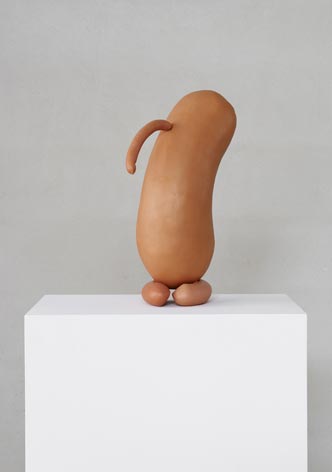
'Head (Abstract Sculptures)', 2013. 'In a way, [sausages are] very much related to biological beings, like animals and people, because they are intestines,' offers the artist

In the third body of work on show, Wurm's new take on his famous 'One Minute Sculptures' series, entitled 'One Minute Forever' (pictured in foreground), sees various parts of the skeleton composed with inanimate objects to curious effect
ADDRESS
Lehmann Maupin
540 West 26th Street
New York NY 10001
Receive our daily digest of inspiration, escapism and design stories from around the world direct to your inbox.
Pei-Ru Keh is a former US Editor at Wallpaper*. Born and raised in Singapore, she has been a New Yorker since 2013. Pei-Ru held various titles at Wallpaper* between 2007 and 2023. She reports on design, tech, art, architecture, fashion, beauty and lifestyle happenings in the United States, both in print and digitally. Pei-Ru took a key role in championing diversity and representation within Wallpaper's content pillars, actively seeking out stories that reflect a wide range of perspectives. She lives in Brooklyn with her husband and two children, and is currently learning how to drive.
-
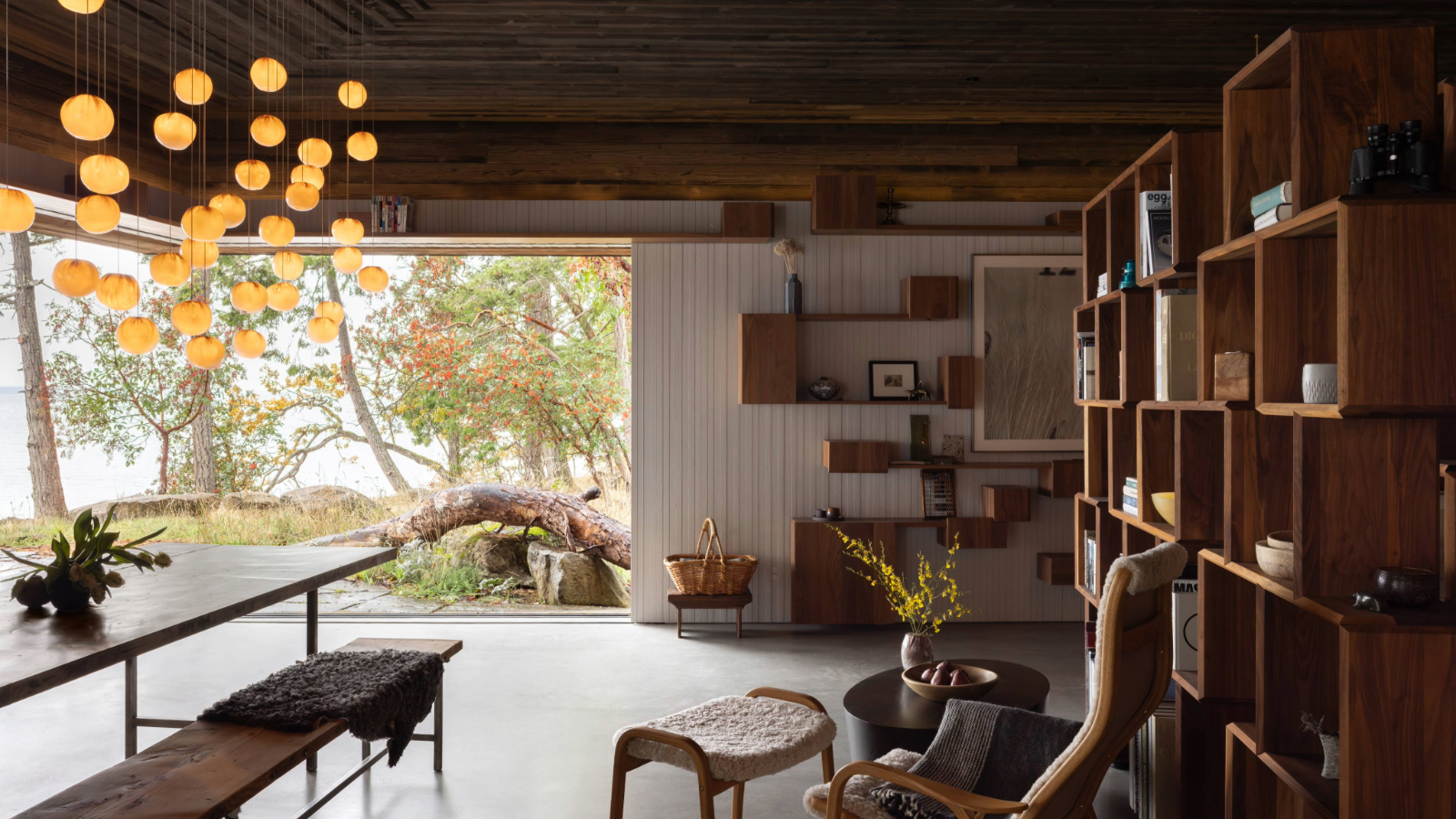 This retreat deep in the woods of Canada takes visitors on a playful journey
This retreat deep in the woods of Canada takes visitors on a playful journey91.0 Bridge House, a new retreat by Omer Arbel, is designed like a path through the forest, suspended between ferns and tree canopy in the Gulf Island archipelago
-
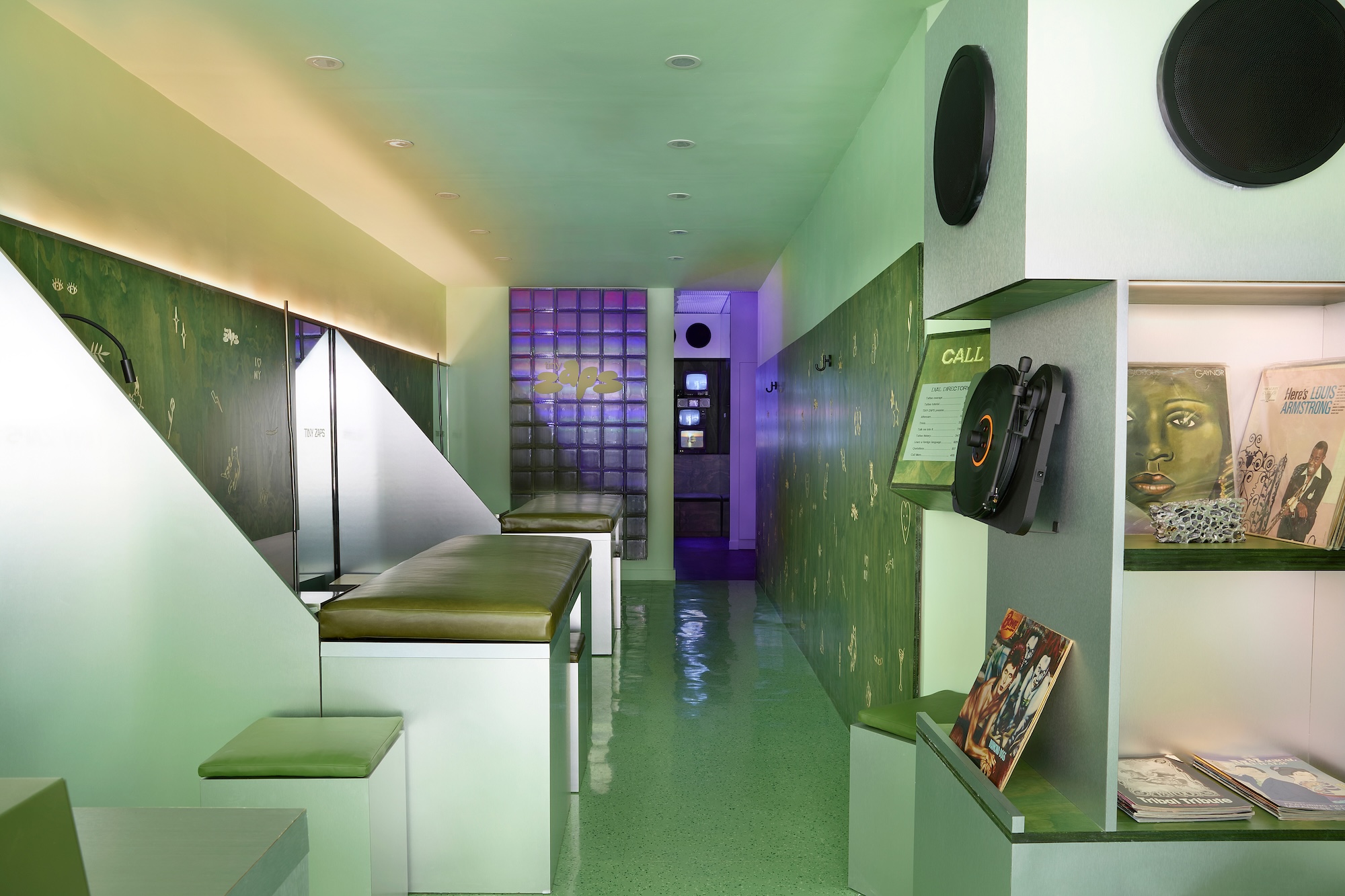 Terrified to get inked? This inviting Brooklyn tattoo parlour is for people who are 'a little bit nervous'
Terrified to get inked? This inviting Brooklyn tattoo parlour is for people who are 'a little bit nervous'With minty-green walls and an option to 'call mom', Tiny Zaps' Williamsburg location was designed to tame jitters
-
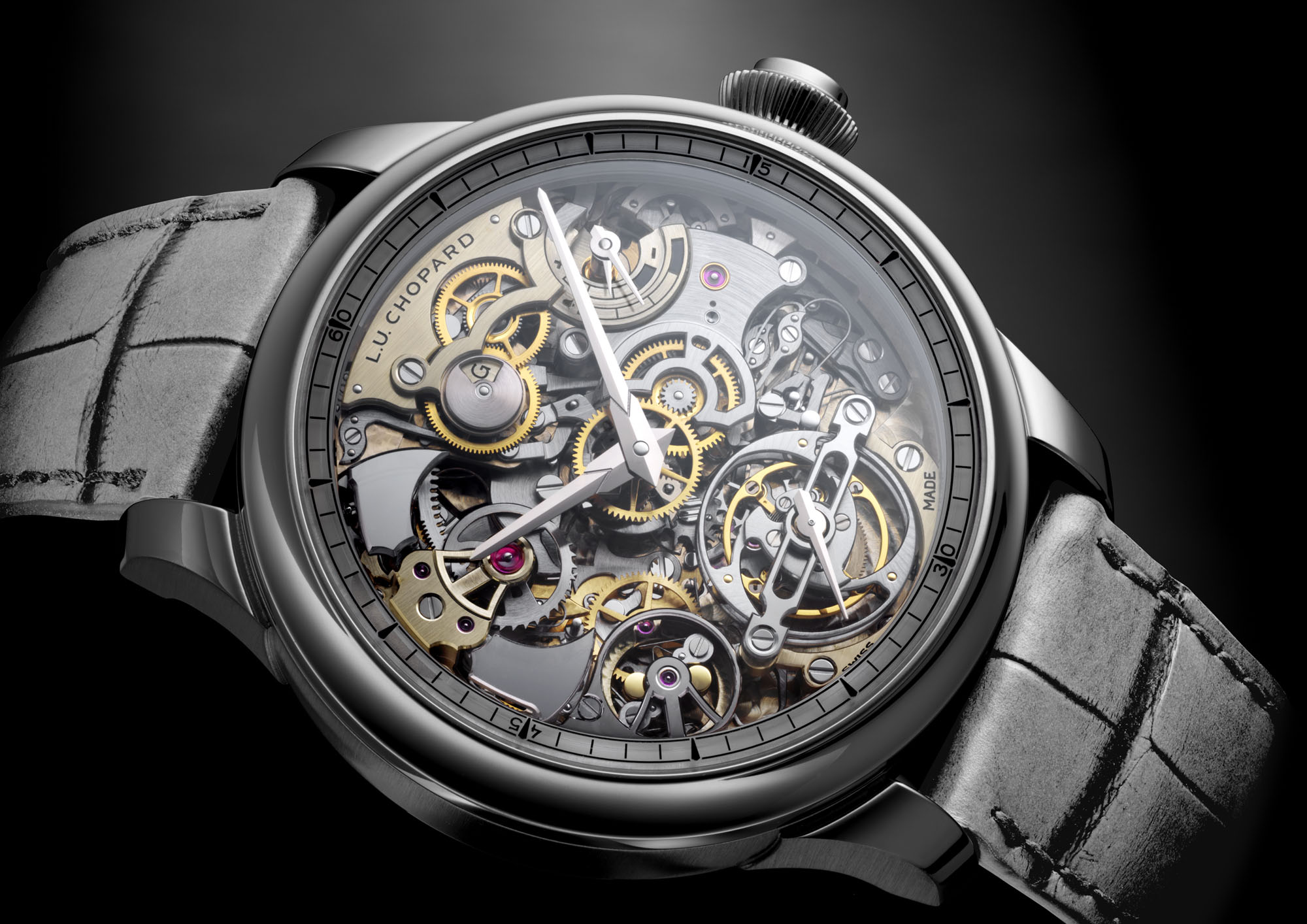 Let’s hear it for the Chopard L.U.C Grand Strike chiming watch
Let’s hear it for the Chopard L.U.C Grand Strike chiming watchThe Swiss watchmaker’s most complicated timepiece to date features an innovative approach to producing a crystal-clear sound
-
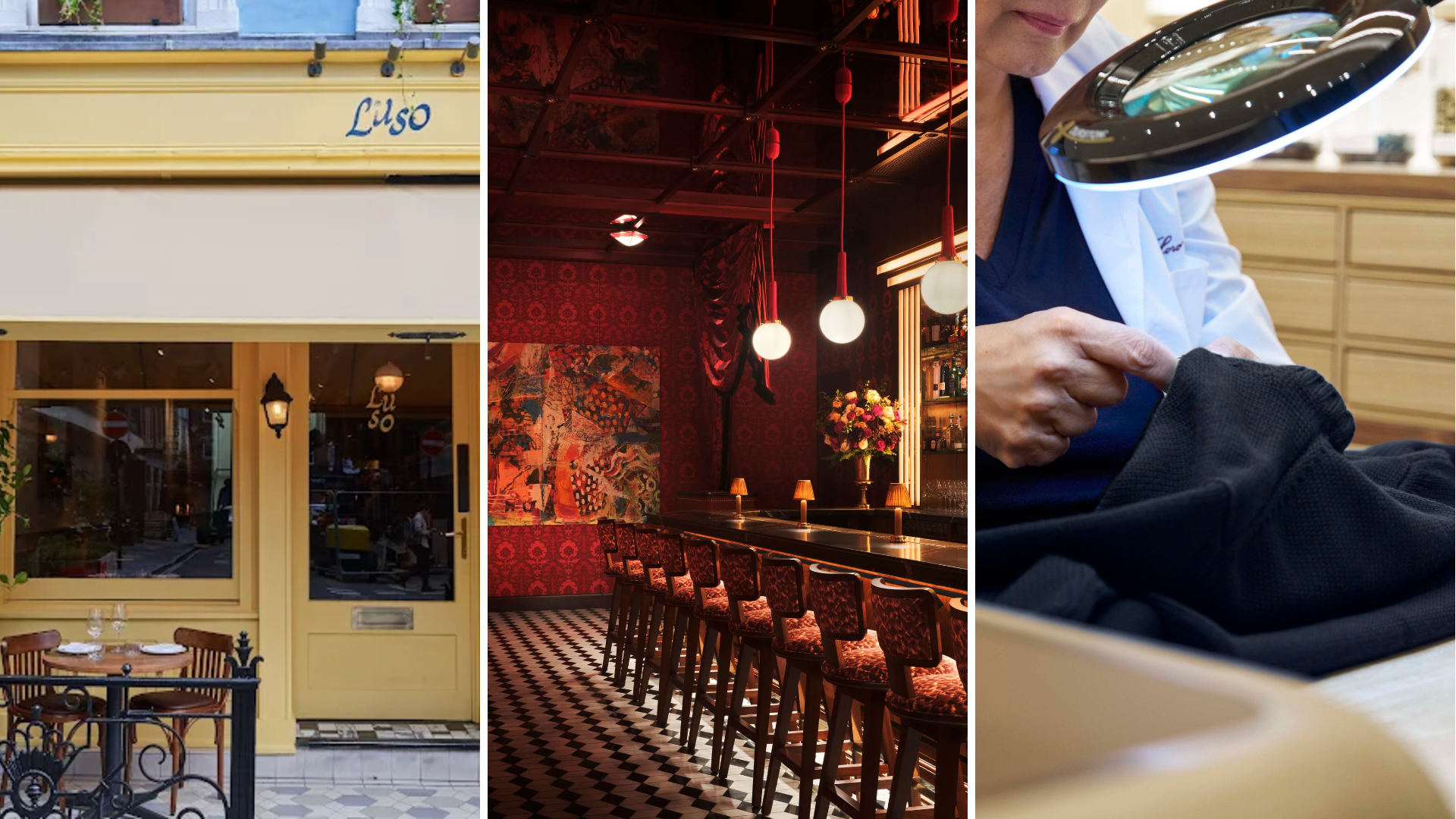 Out of office: The Wallpaper* editors’ picks of the week
Out of office: The Wallpaper* editors’ picks of the week'Tis the season for eating and drinking, and the Wallpaper* team embraced it wholeheartedly this week. Elsewhere: the best spot in Milan for clothing repairs and outdoor swimming in December
-
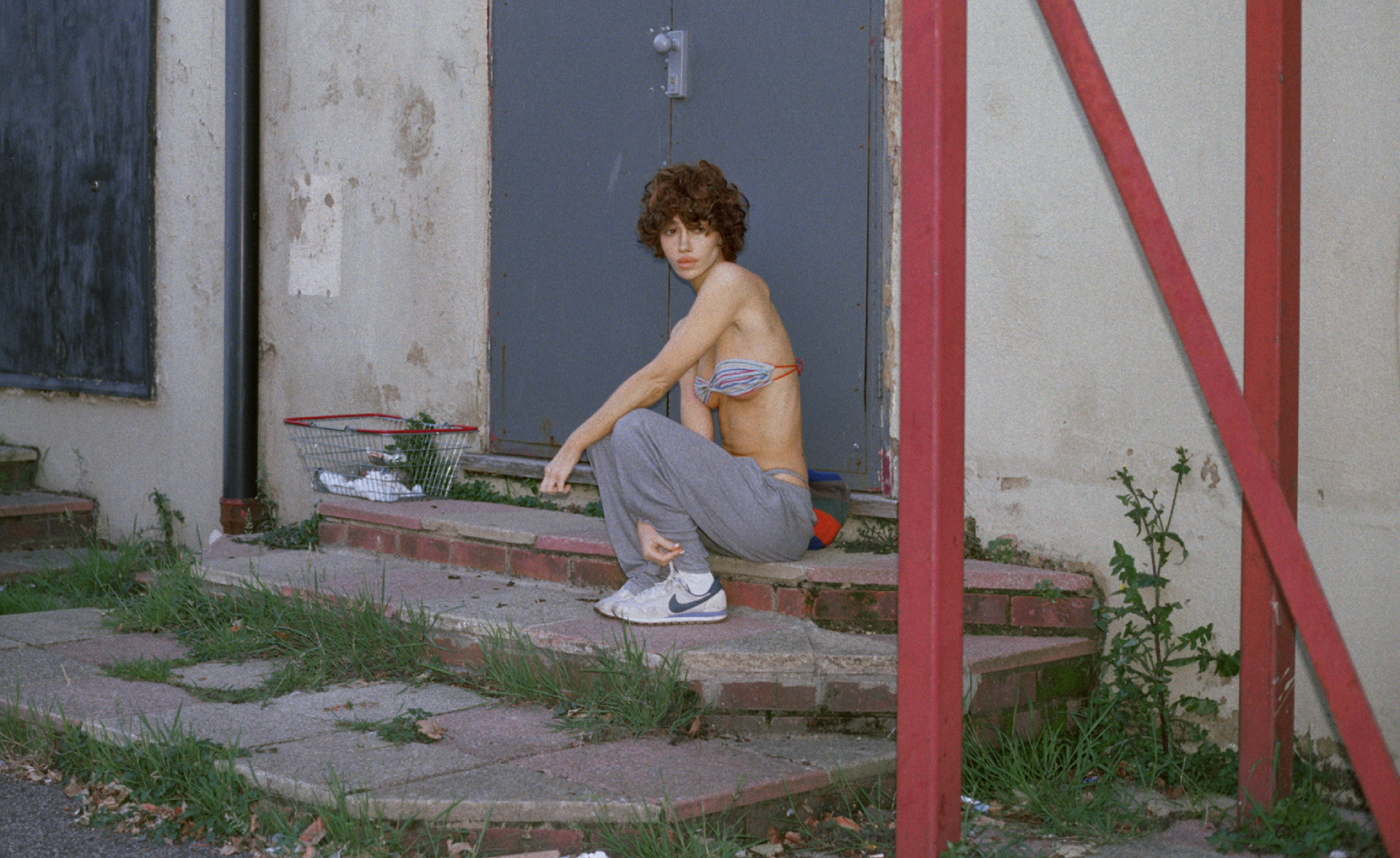 Nadia Lee Cohen distils a distant American memory into an unflinching new photo book
Nadia Lee Cohen distils a distant American memory into an unflinching new photo book‘Holy Ohio’ documents the British photographer and filmmaker’s personal journey as she reconnects with distant family and her earliest American memories
-
 Out of office: The Wallpaper* editors’ picks of the week
Out of office: The Wallpaper* editors’ picks of the weekIt’s been a week of escapism: daydreams of Ghana sparked by lively local projects, glimpses of Tokyo on nostalgic film rolls, and a charming foray into the heart of Christmas as the festive season kicks off in earnest
-
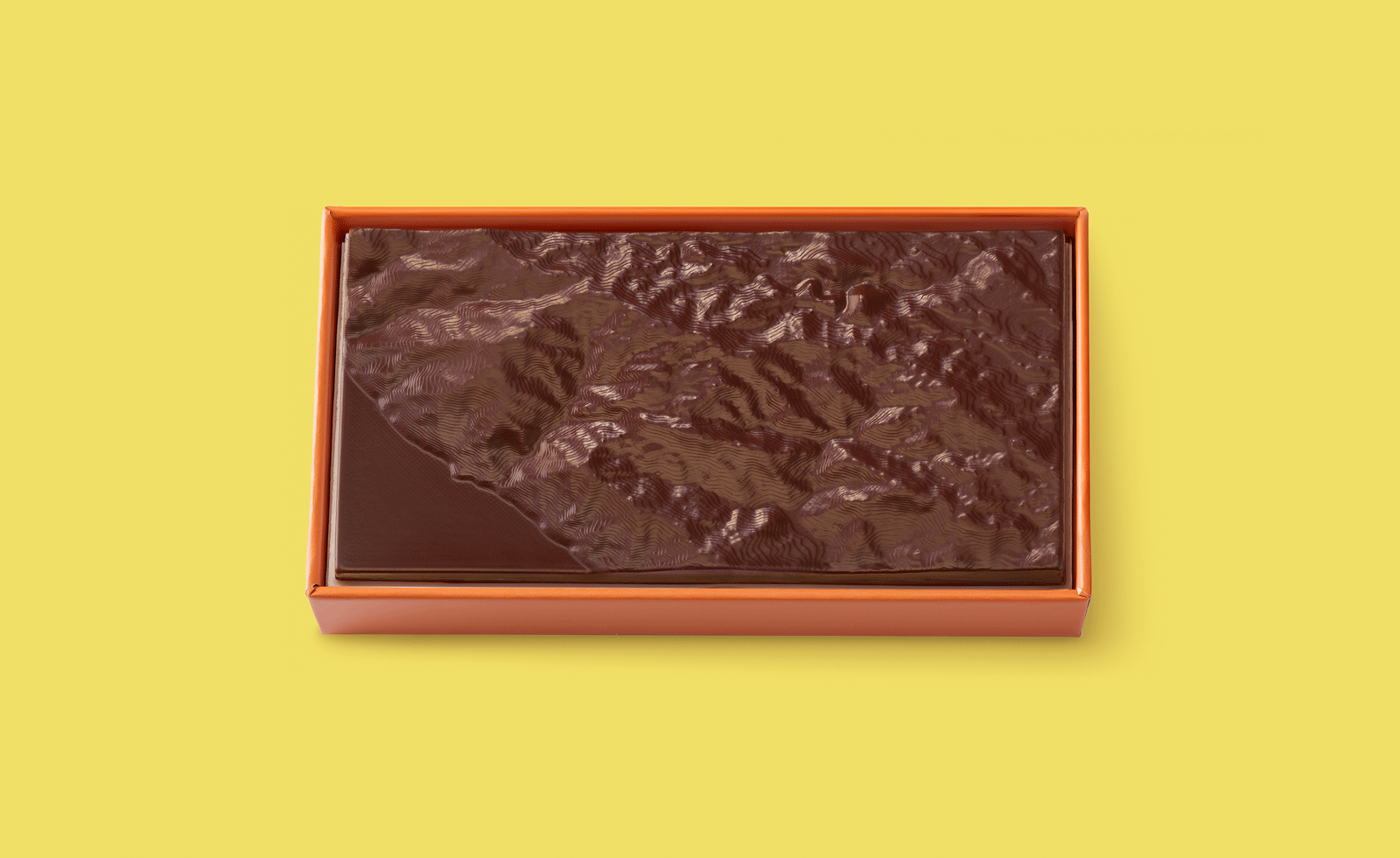 Ed Ruscha’s foray into chocolate is sweet, smart and very American
Ed Ruscha’s foray into chocolate is sweet, smart and very AmericanArt and chocolate combine deliciously in ‘Made in California’, a project from the artist with andSons Chocolatiers
-
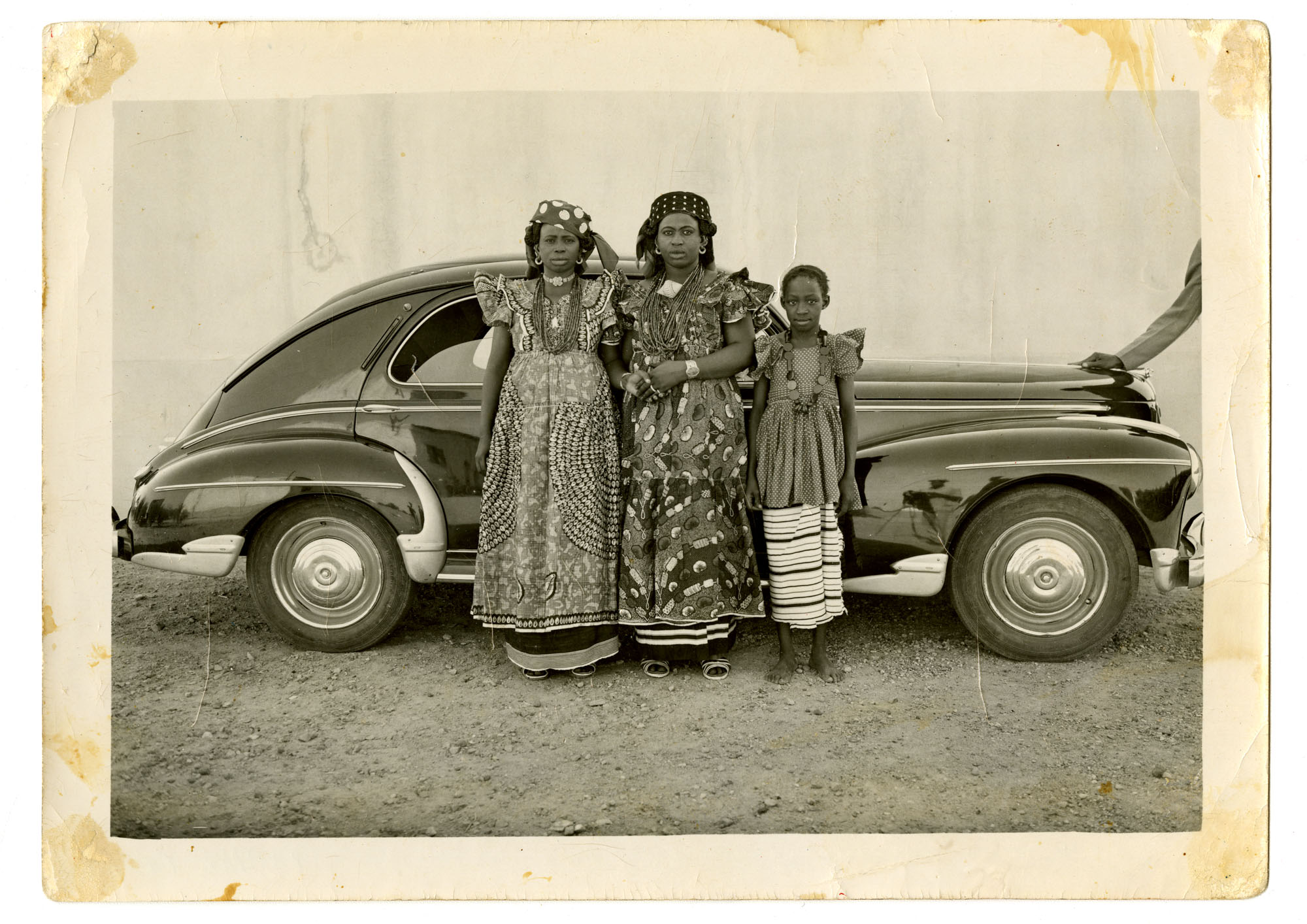 Inside the work of photographer Seydou Keïta, who captured portraits across West Africa
Inside the work of photographer Seydou Keïta, who captured portraits across West Africa‘Seydou Keïta: A Tactile Lens’, an exhibition at the Brooklyn Museum, New York, celebrates the 20th-century photographer
-
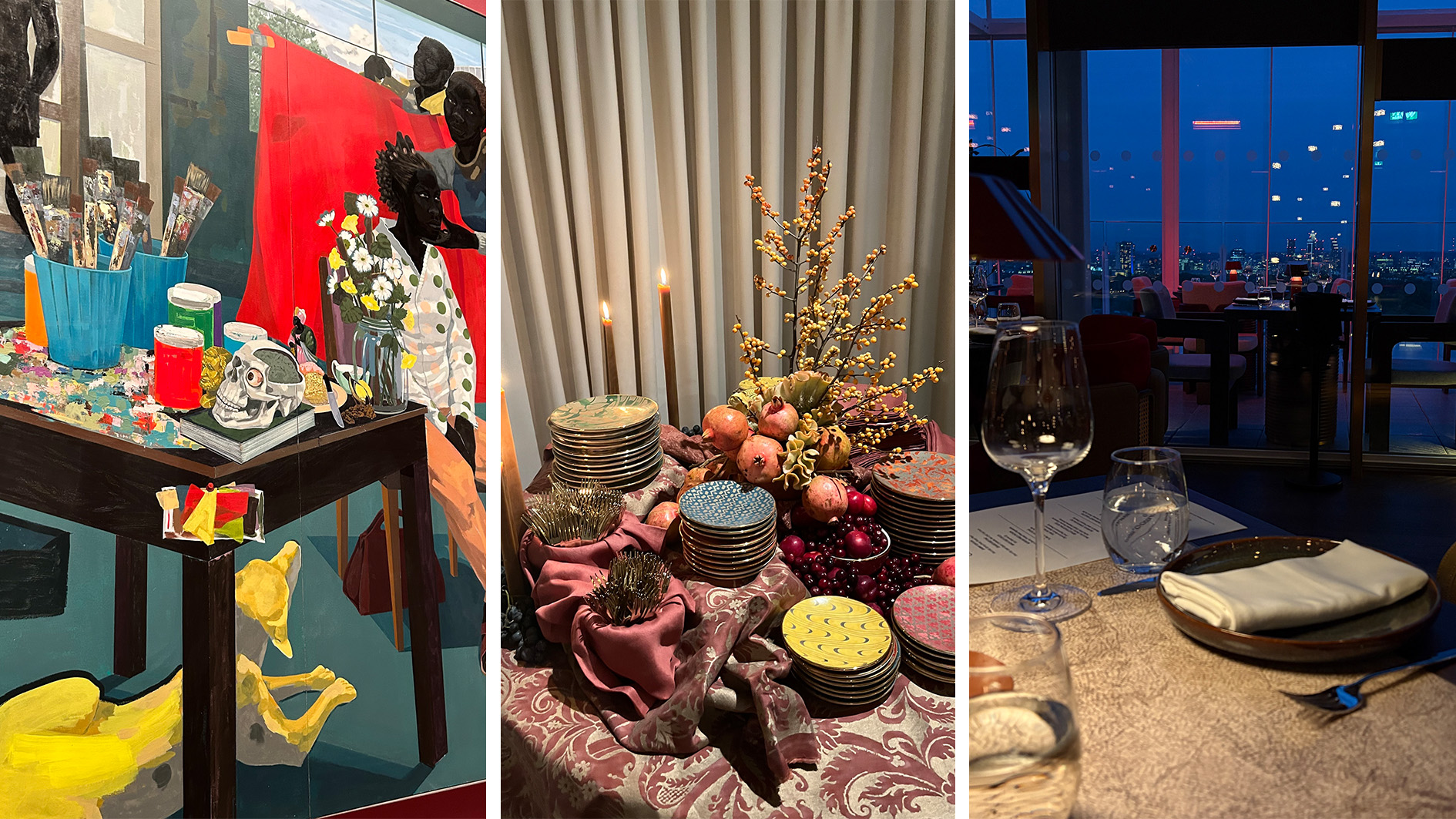 Out of office: The Wallpaper* editors’ picks of the week
Out of office: The Wallpaper* editors’ picks of the weekFrom sumo wrestling to Singaporean fare, medieval manuscripts to magnetic exhibitions, the Wallpaper* team have traversed the length and breadth of culture in the capital this week
-
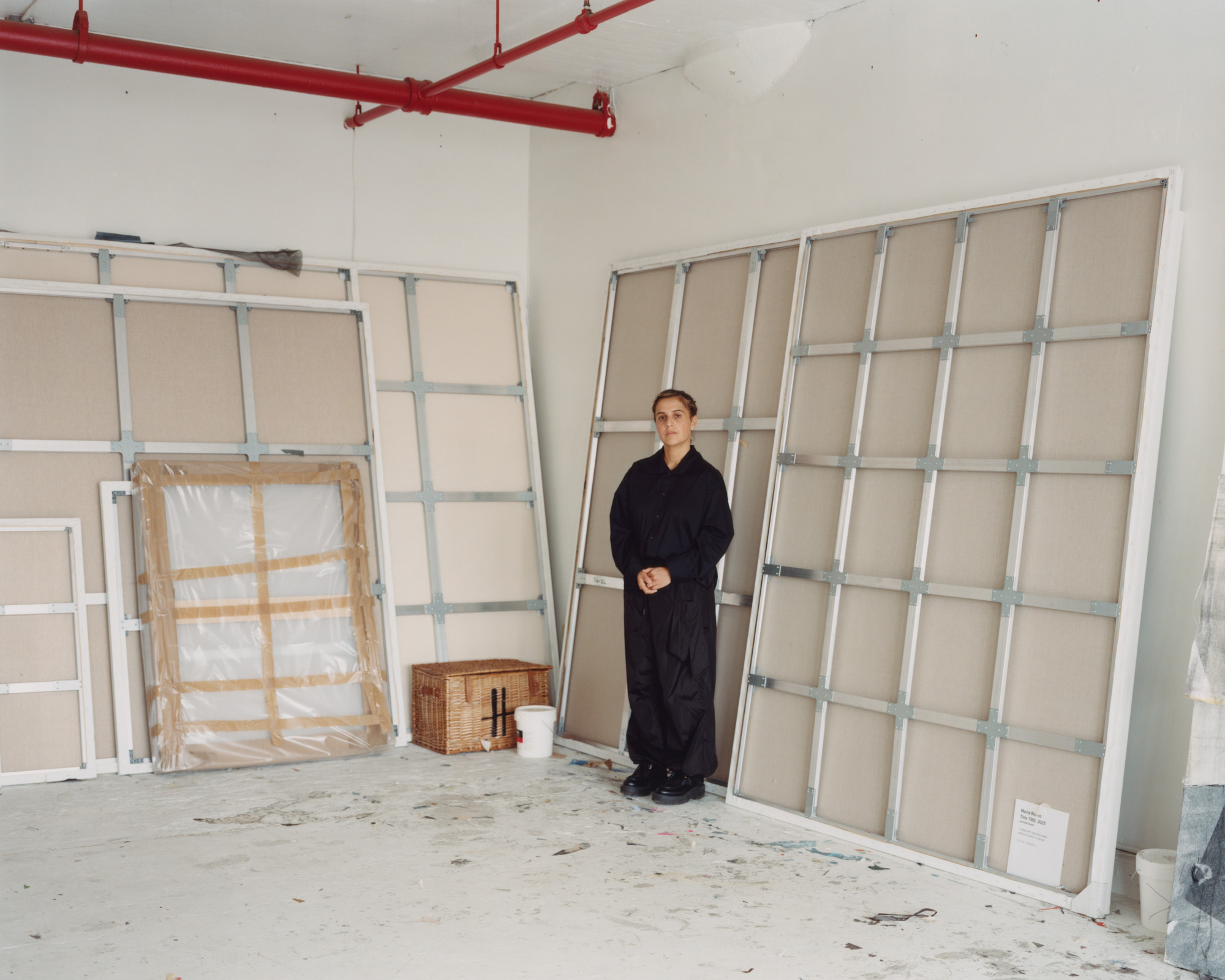 María Berrío creates fantastical worlds from Japanese-paper collages in New York
María Berrío creates fantastical worlds from Japanese-paper collages in New YorkNew York-based Colombian artist María Berrío explores a love of folklore and myth in delicate and colourful works on paper
-
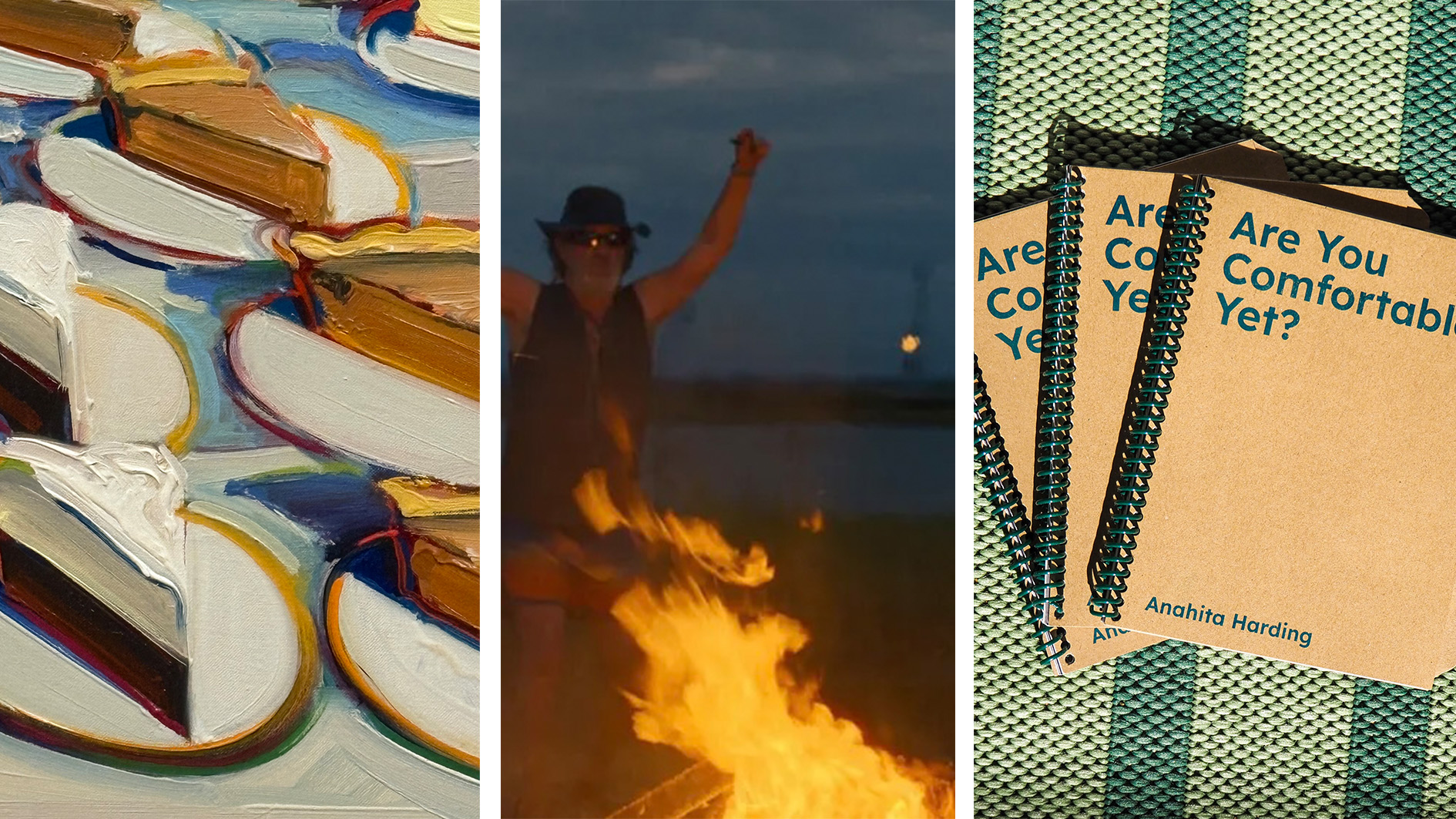 Out of office: the Wallpaper* editors’ picks of the week
Out of office: the Wallpaper* editors’ picks of the weekAs we approach Frieze, our editors have been trawling the capital's galleries. Elsewhere: a 'Wineglass' marathon, a must-see film, and a visit to a science museum